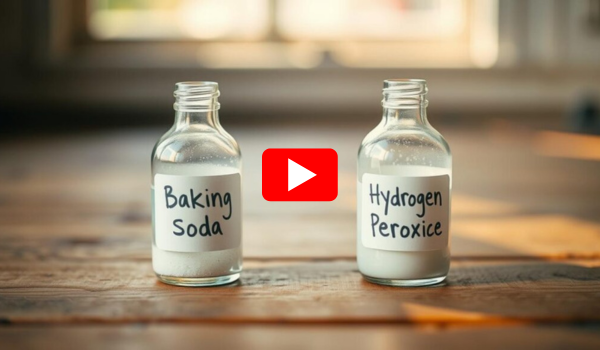Epsom Salt and Vinegar For Toenail Fungus: Does It Work?
Contents
- 1 Understanding Toenail Fungus: What Causes It and Why It’s Hard to Treat
- 2 Why Consider Epsom Salt and Vinegar?
- 3 Does the Combination Work?
- 4 How to Use Epsom Salt and Vinegar for Toenail Fungus
- 5 Pro Tips for Better Results
- 6 Can You Use Epsom Salt and Vinegar Separately?
- 7 Are There Risks or Side Effects?
- 8 Complementary Natural Remedies
- 9 When to See a Doctor
- 10 Final Thoughts: Is It Worth Trying?
Toenail fungus — medically known as onychomycosis — is a stubborn, unsightly, and surprisingly common condition affecting millions of people globally.
Characterized by thick, discolored, brittle nails, this infection isn’t just a cosmetic concern; if left untreated, it can cause pain, nail detachment, and even secondary bacterial infections.
Amidst the sea of prescription antifungal treatments and pricey over-the-counter options, natural home remedies like Epsom salt and vinegar soaks have gained popularity for their simplicity, affordability, and anecdotal success.
But does this humble, two-ingredient soak really work against toenail fungus? How should it be used, and what makes it effective?
Fight toenail fungus naturally with Epsom salt and vinegar soaks. Discover their benefits, how to use them, and tips for healthier, fungus-free nails.
In this blog post, we’ll unpack everything you need to know about using Epsom salt and vinegar for toenail fungus — from how it works to how to prepare it, the science behind it, user tips, safety considerations, and additional natural approaches to complement your regimen.
Understanding Toenail Fungus: What Causes It and Why It’s Hard to Treat
Before diving into the remedy, it’s helpful to understand what you’re up against. Toenail fungus is caused by a group of fungi called dermatophytes, which thrive in warm, moist environments — think sweaty shoes, locker rooms, and public showers. Other culprits include yeasts and non-dermatophyte molds.
Once these fungi invade the nail bed, they cause symptoms such as:
- Yellow or brown discoloration
- Thickened, brittle, or crumbly nails
- Distorted nail shape
- Separation of the nail from the nail bed
- A foul odor
What makes it tough to treat is the slow growth of toenails and the fungus’s ability to hide beneath the nail surface, making topical treatments less effective unless they penetrate deep enough.
Why Consider Epsom Salt and Vinegar?
1. Epsom Salt (Magnesium Sulfate)
Epsom salt isn’t actually salt, but a naturally occurring mineral compound of magnesium, sulfur, and oxygen.
Renowned for its anti-inflammatory, exfoliating, and soothing properties, Epsom salt is often used for soaking feet, easing muscle pain, and softening skin.
In the context of toenail fungus, Epsom salt can:
-
Help soften the affected nail and surrounding skin, making it easier to trim and manage.
-
Draw out moisture and debris from under the nail.
-
Reduce inflammation and discomfort associated with fungal infections.
2. Vinegar (Acetic Acid)
Vinegar — particularly apple cider vinegar (ACV) or white vinegar — is a natural disinfectant with antifungal, antibacterial, and acidic properties. Its low pH helps create an environment that’s hostile to fungal growth.
Benefits for toenail fungus include:
-
Lowering the pH around the nail makes it difficult for fungi to survive.
-
It acts as a natural antiseptic to prevent secondary infections.
-
Soothing itching and irritation around the infected nail.
Does the Combination Work?
While neither ingredient alone is a medically approved cure for onychomycosis, combining Epsom salt and vinegar can create a multipronged approach:
-
Epsom salt soothes, softens, and exfoliates
-
Vinegar disrupts fungal growth and disinfects
Together, they can help manage the infection naturally, especially in mild to moderate cases or as a complementary treatment alongside prescription therapies.
How to Use Epsom Salt and Vinegar for Toenail Fungus
Here’s a step-by-step guide to preparing and using this soak at home.
Ingredients:
- 1 cup of Epsom salt
- 1 cup of apple cider vinegar (or white vinegar)
- 2 quarts of warm water
- A large basin or foot spa
- Clean towel
- Optional: a pumice stone or soft nail brush
Instructions:
Step 1: Clean the Affected Area
Before soaking, wash your feet thoroughly with soap and warm water. Pat dry.
Step 2: Prepare the Soak
Fill a basin with 2 quarts of warm (not hot) water. Stir in 1 cup of Epsom salt until dissolved, then add 1 cup of vinegar.
Step 3: Soak Your Feet
Submerge your feet in the solution for 20–30 minutes. Make sure the affected nail is fully immersed.
Step 4: Exfoliate (Optional)
After soaking, gently scrub the infected nail and surrounding skin with a pumice stone or soft nail brush to remove dead skin and loosen debris.
Step 5: Dry Thoroughly
Fungi love moisture, so ensure your feet, especially between the toes and under the nail — are completely dry.
Step 6: Repeat Regularly
For best results, repeat this soak once daily until the infection improves, which could take several weeks to months, depending on severity.
Pro Tips for Better Results
- Use clean socks: After each soak, wear fresh, breathable socks to avoid reinfection.
- Disinfect shoes: Spray the inside of your shoes with antifungal spray or use UV shoe sanitizers.
- Trim nails carefully: Keep affected nails short, but avoid cutting too close to the skin.
- Avoid sharing nail tools: Prevent spreading fungus to others or reinfecting yourself.
Can You Use Epsom Salt and Vinegar Separately?
Yes — both ingredients have standalone benefits:
- Vinegar soaks (without Epsom salt) are known for their antifungal effects.
- Epsom salt soaks alone soothe inflamed skin and soften thickened nails.
However, combining them offers a synergistic effect: one tackles the fungus while the other relieves discomfort and preps the nail for easier care.
Are There Risks or Side Effects?
Generally, Epsom salt and vinegar soaks are safe for most people. However:
-
People with diabetes, poor circulation, or open wounds should consult a doctor first. Improper foot care can lead to complications.
-
Over-soaking can cause dry, cracked skin.
-
Vinegar’s acidity might irritate sensitive skin if used too frequently or in high concentrations.
To stay safe:
-
Limit soaks to 20–30 minutes daily.
-
Rinse feet with clean water after soaking if irritation occurs.
-
Moisturize afterward with a non-greasy, antifungal foot cream.
Complementary Natural Remedies
While Epsom salt and vinegar are popular, they’re not the only natural options. You can enhance your toenail fungus treatment plan with:
Tea Tree Oil
Known for its powerful antifungal and antiseptic properties. Apply diluted tea tree oil to the nail after soaking.
Coconut Oil
Contains caprylic acid, which has natural antifungal activity. Apply to clean, dry nails twice daily.
Garlic
Crushed garlic contains allicin, a compound with potent antimicrobial properties. Apply as a paste or soak in garlic-infused oil.
Oregano Oil
Rich in thymol, a natural antifungal agent. Use with care, as it can be irritating if undiluted.
When to See a Doctor
While natural remedies can be helpful, toenail fungus is notoriously persistent. See a healthcare provider if:
- The infection worsens or spreads.
- There’s severe pain, redness, or swelling.
- You have underlying health issues like diabetes or an immune deficiency.
- The nail separates from the nail bed.
Medical options include topical and oral antifungals, laser therapy, and in severe cases, nail removal.
Final Thoughts: Is It Worth Trying?
Epsom salt and vinegar for toenail fungus is a time-honored home remedy backed by generations of anecdotal success. While it may not completely cure severe infections, it can:
- Soften the affected nail.
- Reduce fungal growth.
- Soothe pain and inflammation.
- Improve the appearance of the nail over time.
Given its affordability, ease of use, and minimal side effects, it’s a worthwhile addition to your toenail fungus care routine, especially when combined with proper foot hygiene, nail care, and other natural or medical treatments.
.
References
- https://www.ncbi.nlm.nih.gov/pmc/articles/PMC7011200/
- https://www.ncbi.nlm.nih.gov/pmc/articles/PMC2763764/
- https://pubmed.ncbi.nlm.nih.gov/27125054/
- https://www.medicalnewstoday.com/articles/apple-cider-vinegar-for-toenail-fungus
- https://www.healthline.com/health/epsom-salt-foot-soak
- https://www.ncbi.nlm.nih.gov/pmc/articles/PMC4881169/



